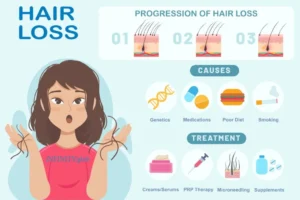Table of Content :
- Introduction
- The Science of Hair: A Quick Recap
- Understanding Dandruff: The Flakey Foe
- Common Causes of Dandruff
- Solutions for Dandruff
- Managing Frizz: Taming the Unruly Strands
- Common Causes of Frizz
- Solutions for Frizz
- Dealing with Split Ends: The Divide and Conquer
- Common Causes of Split Ends
- Solutions for Split Ends
- Conclusion
Introduction : Common hair Problems
- Many people face a variety of common hair problems that can be as frustrating as they are prevalent from split ends and frizz to dandruff and hair loss, these issues can impact not only the health and appearance of one’s hair but also their overall self-esteem and confidence. Understanding the causes and solutions for these common hair loss is essential for achieving and maintaining healthy, vibrant locks.
- The Significance of Hair: Hair is not just a physical attribute; it carries cultural, social, and personal significance. It’s an essential part of our identity and self-expression.
- Navigating Common Hair Problems: While hair enhances our appearance, it’s susceptible to various issues. Understanding and addressing these problems are crucial for maintaining both the health and aesthetics of our hair.
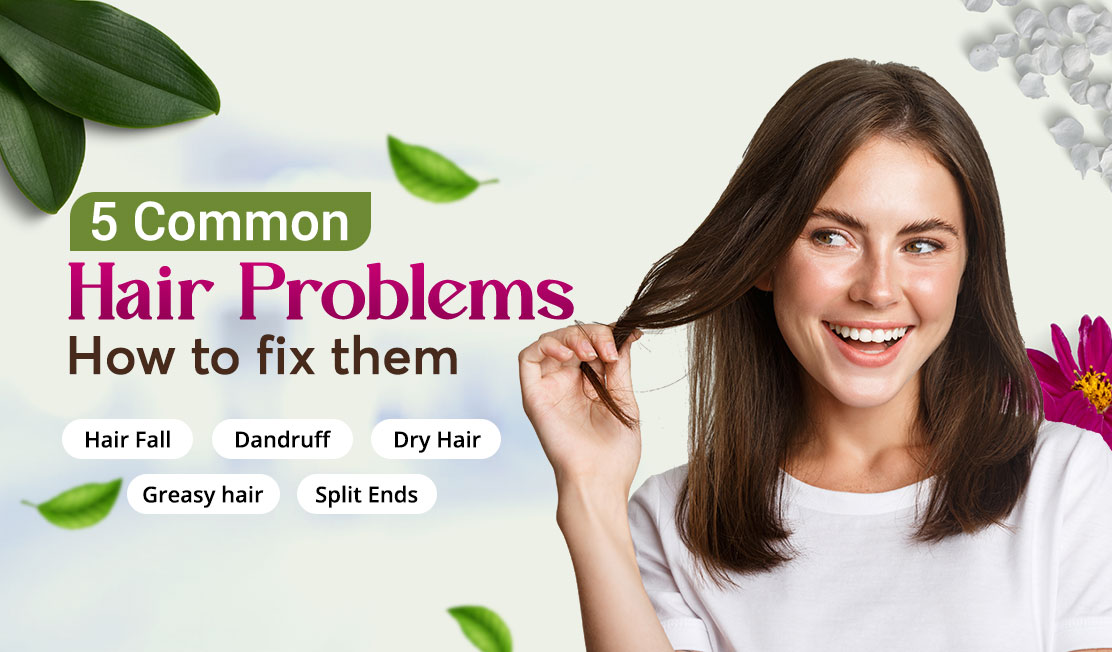
The Science of Hair: A Quick Recap
- Hair Composition and Structure: Hair is primarily made of a protein called keratin, which forms the structure of the hair shaft. The outermost layer, the cuticle, acts as a protective barrier, while the inner cortex determines hair strength and elasticity.
- The Hair Growth Cycle: Hair growth occurs in cycles, including the anagen (growth), catagen (transition), telogen (resting), and exogen (shedding) phases. This dynamic cycle determines the length and density of hair.
Understanding Dandruff: The Flakey Foe
Dandruff is a common scalp condition that many people experience at some point in their lives. It’s characterized by the presence of white or grayish flakes on the scalp and in the hair. While dandruff itself isn’t a serious medical condition, it can be bothersome and affect one’s self-esteem. Understanding the nature of dandruff, its causes, and potential solutions is essential for managing this scalp concern.
- Defining Dandruff: Dandruff is essentially the excessive shedding of dead skin cells from the scalp. It can result in visible flakes that are often accompanied by itching and irritation. These flakes can be embarrassing, especially if they fall onto clothing or are visible in the hair.
- Uncovering the Science Behind Dandruff: The primary culprit behind dandruff is a microorganism called Malassezia. This yeast-like fungus is naturally found on the scalp of most individuals, but in some cases, it can proliferate and cause problems. Malassezia feeds on the natural oils produced by the scalp, known as sebum. As it metabolizes these oils, it produces a byproduct called oleic acid. For some people, oleic acid triggers an immune response that leads to the accelerated shedding of skin cells from the scalp’s surface.
Common Causes of Dandruff :

- Oily Scalp: Excessive oil production can create an environment that encourages the growth of Malassezia.
- Dry Scalp: On the other hand, a dry scalp can also lead to flaking. Dry skin cells are more likely to shed and become visible.
- Irritated Skin: Inflammation and irritation of the scalp can accelerate skin cell turnover and lead to dandruff.
- Unbalanced Hygiene: Infrequent shampooing or inadequate scalp cleansing can allow dead skin cells and oils to accumulate, providing a favorable environment for Malassezia.
- Sensitivity to Products: Some hair care products, particularly those with harsh chemicals, can worsen scalp irritation and contribute to dandruff.
Symptoms of Dandruff: The most common symptoms of dandruff include:
- White or grayish flakes on the scalp and hair
- Itchy or irritated scalp
- Dryness and tightness of the scalp
- Flakes falling onto clothing
Treatment for Dandruff
- Dealing with dandruff can be frustrating, but the good news is that there are various strategies and treatments available to help manage and reduce its symptoms. From preventive measures to medical interventions and Ayurvedic remedies, let’s explore the range of solutions for tackling dandruff effectively.
Prevention Strategies:
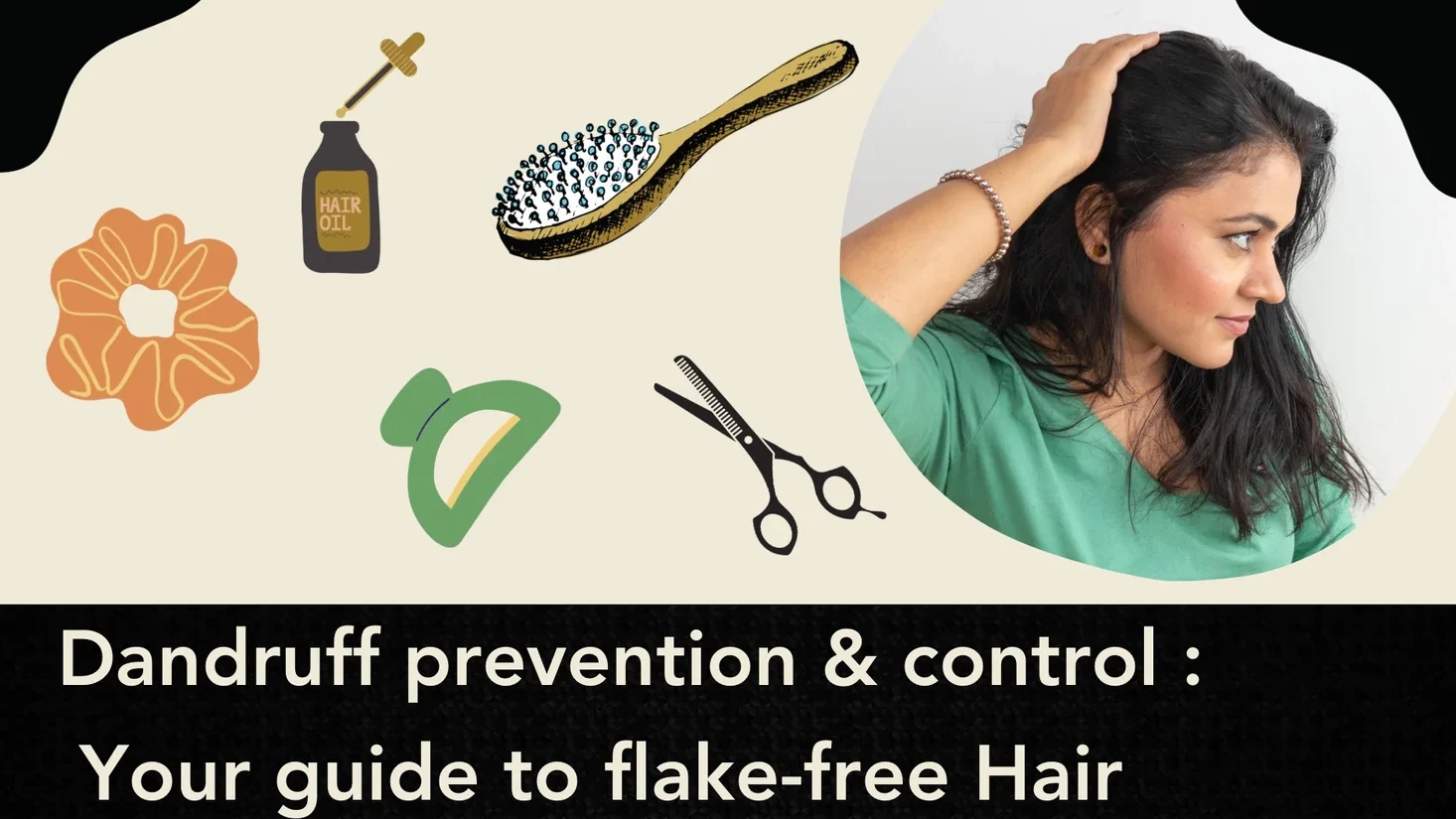
- Regular Shampooing: Keeping your scalp clean is essential to prevent the buildup of oil, dead skin cells, and the Malassezia fungus. Shampoo your hair regularly with a mild, pH-balanced shampoo.
- Proper Scalp Hygiene: Gently massage your scalp while shampooing to help exfoliate dead skin cells and improve blood circulation.
- Balanced Diet: A diet rich in vitamins and minerals, particularly those supporting skin health (vitamin A, vitamin E, zinc), can contribute to a healthier scalp.
- Stress Management: Stress can exacerbate dandruff symptoms, so practicing stress-reduction techniques like meditation, yoga, and deep breathing can be beneficial.
- Avoid Irritating Hair Products: Choose gentle hair care products that are free of harsh chemicals, fragrances, and sulfates.
Medical Approaches:
- Medicated Shampoos: Over-the-counter and prescription shampoos containing specific active ingredients can effectively control dandruff:
- Zinc Pyrithione: Slows down the growth of the Malassezia fungus and helps reduce flaking.
- Ketoconazole: An antifungal agent that targets the fungus responsible for dandruff.
- Salicylic Acid: Exfoliates the scalp, removing dead skin cells and reducing flaking.
- Selenium Sulfide: Reduces the growth of Malassezia and helps control itching and flaking.
- Topical Steroid Creams: For more severe cases of dandruff with significant inflammation, a dermatologist may recommend corticosteroid creams or lotions to reduce inflammation and itching.
- Prescription Medications: In cases of severe dandruff or when other treatments haven’t been effective, a dermatologist may prescribe stronger antifungal medications or topical treatments.
Ayurvedic Remedies: Ayurveda offers holistic remedies to address dandruff by focusing on maintaining overall scalp health and balance:
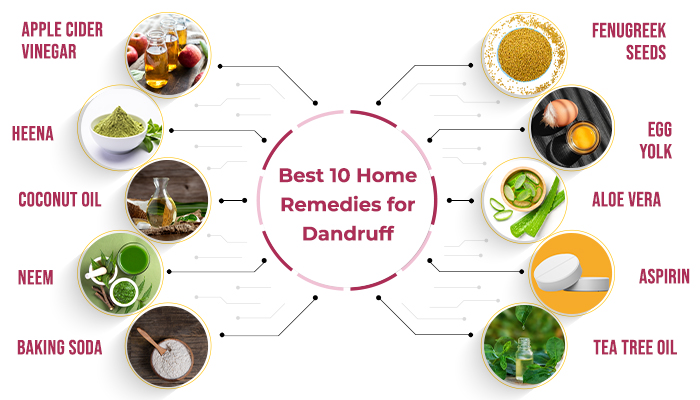
- Neem: Neem’s antibacterial and antifungal properties make it an effective remedy for dandruff. Applying neem oil or neem-based products can soothe the scalp and reduce flaking.
- Aloe Vera: Aloe vera gel can help soothe an irritated scalp and alleviate itching. Its natural enzymes promote healing and balance.
- Fenugreek Seeds: Soaking fenugreek seeds and creating a paste to apply on the scalp can exfoliate dead skin cells and reduce flaking.
- Tea Tree Oil: Known for its antimicrobial properties, tea tree oil can help control the growth of Malassezia and relieve itching.
Complementary Approaches :
- Essential Oils: Essential oils like lavender, rosemary, and chamomile can be diluted in carrier oils and massaged onto the scalp to soothe irritation and reduce flaking.
- Apple Cider Vinegar: Diluted apple cider vinegar can help restore the scalp’s pH balance and reduce the growth of fungus.
- Yogurt and Lemon Mask: A mixture of yogurt and lemon juice can be applied to the scalp as a mask to exfoliate and balance the scalp.
- Probiotics: Consuming probiotic-rich foods can help balance the gut microbiome, which may indirectly affect scalp health.
Remember that the effectiveness of these solutions can vary from person to person. If your dandruff persists or worsens despite trying these approaches, it’s recommended to consult a dermatologist. They can provide personalized recommendations and determine if there’s an underlying medical condition contributing to your dandruff.
Managing Frizz: Taming the Unruly Strands
- Introducing Frizz: Frizz occurs when the hair cuticle is lifted, allowing moisture to enter and cause the hair shaft to swell, resulting in a frizzy appearance.
- Decoding the Science Behind Frizz: Hair is hygroscopic, meaning it can absorb and retain moisture from the surrounding environment. In high humidity, hair absorbs moisture from the air, leading to frizz.
Common Causes of Frizz :
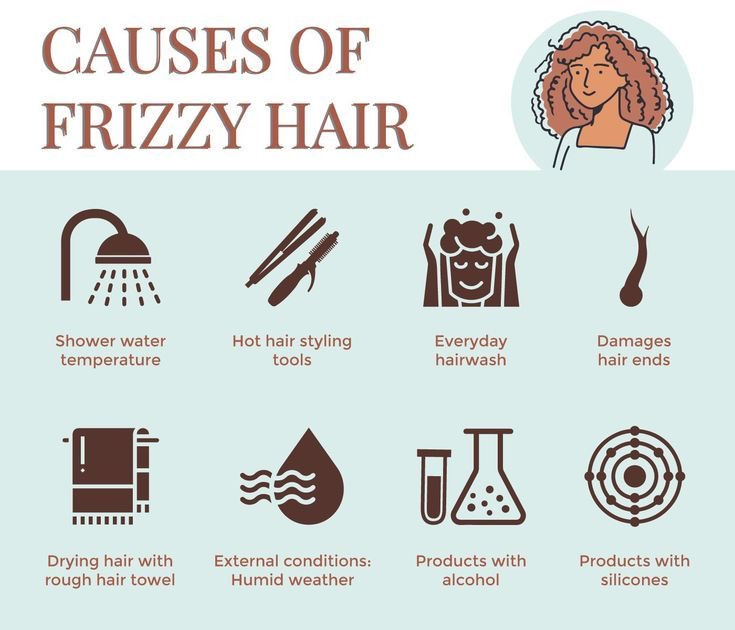
- The Role of Humidity: Humidity is a significant contributor to frizz, as the hair’s hygroscopic nature causes it to absorb moisture and swell.
- Combatting Dryness: Dehydrated hair cuticles are more prone to lifting and frizz. Ensuring proper hydration is essential.
- Understanding Damaged Cuticles: Chemical treatments, heat styling, and rough handling can damage the outer cuticle layer, making it difficult to maintain a smooth appearance.
Solutions for Frizz :
- Preventive Measures: Sulfate-free shampoos, deep conditioning treatments, and anti-frizz serums can help seal the cuticle and prevent moisture absorption.
- Effective Styling Techniques: Using a diffuser when blow-drying, avoiding excessive heat, and employing protective hairstyles can manage frizz and maintain a smoother look.

Dealing with Split Ends: The Divide and Conquer
- Unraveling Split Ends: Split ends occur when the protective cuticle layer is damaged, causing the hair shaft to split into multiple fragments.
- Delving into the Science Behind Split Ends: Hair becomes susceptible to splitting due to mechanical damage, chemical treatments, and excessive heat exposure that weaken its structure.
Common Causes of Split Ends
The Impact of Heat Styling: Frequent use of heat styling tools can strip moisture from the hair, leaving it brittle and prone to splitting.
Effects of Chemical Treatments: Chemical processes like coloring and perming weaken the hair’s structure, making it susceptible to splits.
Perils of Rough Handling: Aggressive brushing, especially on wet hair, and combing can cause breakage and split ends.
Solutions for Split Ends
Preventive Approaches: Regular trims every 6-8 weeks, gentle detangling with wide-tooth combs, and minimizing harsh treatments can prevent split ends.
Treatment Options: While trimming is the most effective solution, using leave-in conditioners and serums can temporarily improve the appearance of split ends.
Conclusion :
Embracing Healthy Hair Habits: Maintaining a consistent hair care routine that includes proper cleansing, conditioning, and protection from damage is essential.
The Journey to Beautiful Hair: By understanding the underlying science and implementing effective strategies, you can overcome common hair problems, ensuring your hair remains healthy, vibrant, and beautiful.

